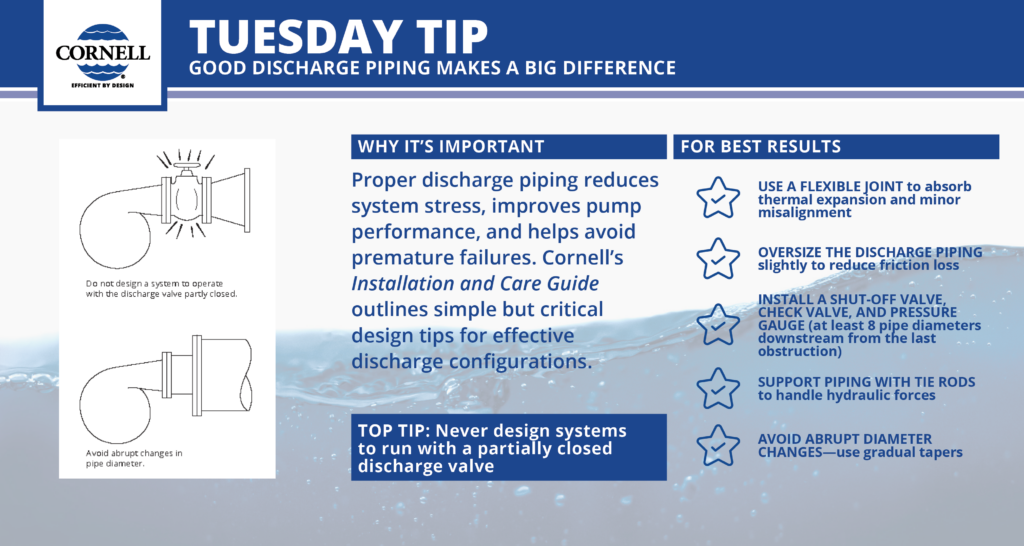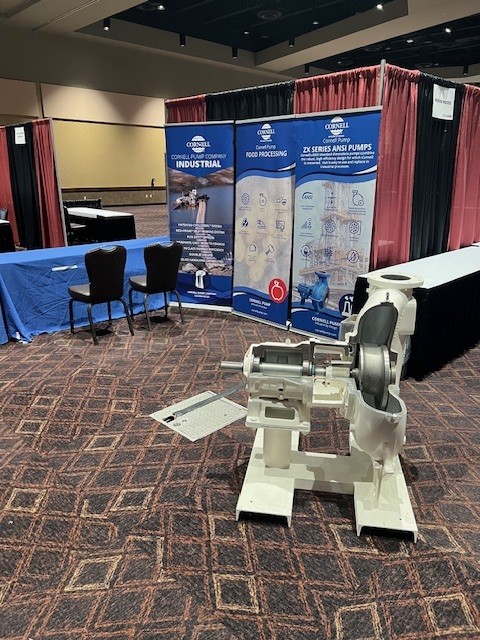Proper discharge piping reduces system stress, improves pump performance, and helps avoid premature failures. Cornell’s Installation and Care Guide outlines simple but critical design tips for effective discharge configurations:
• Use a flexible joint to absorb thermal expansion and minor misalignment
• Oversize the discharge piping slightly to reduce friction loss
• Install a shut-off valve, check valve, and pressure gauge (at least 8 pipe diameters downstream from the last obstruction)
• Support piping with tie rods to handle hydraulic forces
• Avoid abrupt diameter changes—use gradual tapers
• Never design systems to run with a partially closed discharge valve
Whether you’re running 200 GPM or 20,000 GPM, these practices lead to smoother operation and longer pump life.
Installation and care matter—on both ends of the system.
#TuesdayTip #PumpingSystems #CornellPump #DischargePiping #PumpReliability #IndustrialPumps #EfficientByDesign



